Non-profit organizations are vital to every community; however, they are susceptible to many challenges due to the nature of the industry. A common challenge many organizations face is developing and enforcing effective policies. Oftentimes, non-profits do not possess the resources to uphold policies; therefore, they have increased vulnerability to risks. It is vital for organizations to reduce these risks by investing in their internal operations.
What better way to invest in your organization than by assessing the policies impacting your workforce? Evaluating the effectiveness of your non-profit drug testing policy is a great place to begin. Although there are many challenges non-profits face with enforcing drug and alcohol policies to include limited screening knowledge, resources, and costs, it is difficult to fulfill the mission of the non-profit if the organization fails to implement effective policies and procedures. Nevertheless, there are many innovative approaches available to ensure your non-profit drug testing policy promotes a drug-free workplace.
6 Steps to A Non-Profit Drug Free Workplace
- Policy Development – Evaluate present policies, determine the effectiveness of current policies, assess the needs of the organization, and implement any necessary changes
- Testing Awareness – Educate your staff about your non-profit drug testing polices and create an environment that encourages a drug-free workplace
- Training & Safety Programs– Incorporate policy training during new hire orientation, within the onboarding process, and in annual training and development requirements. Conduct brown bag lunch trainings, online trainings, workshops, and hold focus groups to educate your staff about substance abuse and drugs in the workplace.
- Employee Awareness – Ensure the policy is outlined in the employee handbook for employees to reference and ensure the policy is communicated to your staff
- Employee Assistance Program (EAP) – Discuss concerns with your employees, identify any obstacles, and offer services that can educate employees about prevention and intervention measures. Offer services to employees outside of work by collaborating with the City of Houston Crackdown
- Enforce Accountability – Make employees/volunteers accountable for their behaviors and identify consequences in the policy
According to the Texas Department of Insurance Drug-Free Workplace Resource Guide, organizations that fail to foster a drug-free workplace will oftentimes experience less productivity, work injuries, and an increase in workers compensation claims. As a result, there are many advantages to enforcing a drug-free workplace in your non-profit to include safety, productivity, and minimize risk. To ensure your organization is equipped to deal with this growing demand, it is essential to develop policies and procedures that will allow your organization to provide the services needed to contribute to the growth of the community. Protect your organization by fostering a drug-free workplace environment.

.png?width=500&height=500&name=Blue%20and%20White%20Classic%20Shield%20Financial%20with%20Star%20Logo%20Design%20(1).png)


